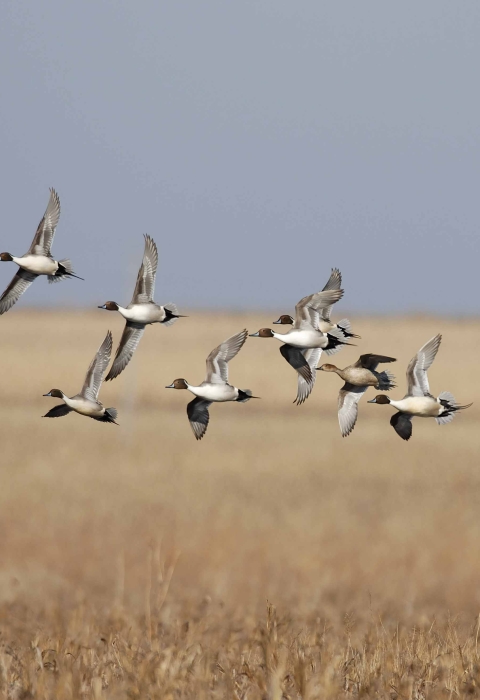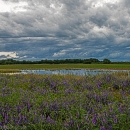About Us
Bald Knob National Wildlife Refuge (NWR), located near the small town of Bald Knob in White County, Arkansas, was established in 1993 to protect and provide feeding and resting areas for migratory waterfowl. The Service’s Final Environmental Assessment and land protection plan for the refuge stated the purpose for acquisition “is for preservation of winter habitat for lesser-snow geese, Canada geese, mallards, pintail, blue-winged teal, and wood ducks.” The refuge annually hosts the largest populations of wintering pintail in the state and is a crucial staging area for pintail migrating to the coastal areas of Louisiana and eastern Texas.
Bald Knob NWR encompasses approximately 15,000 acres of forested wetlands and croplands. Lying along the Little Red River and adjacent to the Henry Gray Hurricane Lake State Wildlife Management Area, this refuge is an important link in protecting wildlife and its habitat.
Bald Knob NWR has been named as an “Important Birding Area” by the Audubon Arkansas Board of Directors.
Our History
Prior to its establishment in 1993, the lands within the current boundaries of Bald Knob NWR were utilized primarily for commercial farming. Following the acquisition of this land by the Service, efforts began to restore over half of the agricultural lands back to their historic state of a bottomland hardwood forest. Beginning in 1993 and continuing through the early 2000s, over 7,000 acres of land have been planted with bottomland hardwood trees.
Other Facilities in this Complex
A National Wildlife Refuge Complex is an administrative grouping of two or more refuges, wildlife management areas, or other refuge conservation areas that are primarily managed from a central office location. Refuges are grouped into a complex structure structure
Something temporarily or permanently constructed, built, or placed; and constructed of natural or manufactured parts including, but not limited to, a building, shed, cabin, porch, bridge, walkway, stair steps, sign, landing, platform, dock, rack, fence, telecommunication device, antennae, fish cleaning table, satellite dish/mount, or well head.
Learn more about structure because they occur in a similar ecological region, such as a watershed or specific habitat type, and have a related purpose and management needs. Typically, a project leader or complex manager oversees the general management of all refuges within the complex and refuge managers are responsible for operations at specific refuges. Supporting staff, composed of administrative, law enforcement, refuge manager, biological, fire, visitor services, and maintenance professionals, are centrally located and support all refuges within the complex.

